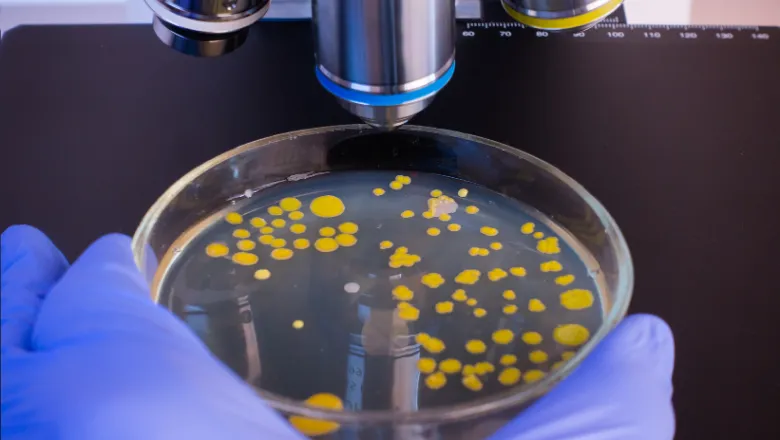This study puts King’s on the map as a place where the recent cryo-EM ‘resolution revolution’ is being exploited to answer critical questions in biomedical sciences.
Dr Julien Bergeron, School of Basic & Medical Biosciences
03 July 2020
Scientists identify important insights into how bacteria move in the body
Researchers led by Structural Biologist, Dr Julien Bergeron, recently published a paper in Nature Communications which increases our understanding of how bacteria swim in the body and could be used to develop new antibiotics or vaccines.

Bacteria use a propeller-shaped “molecular motor” called flagellum to swim and attach to surfaces they infect. It has very intricate machinery, composed of over 25 different proteins, and it is an essential organelle that allows bacteria to infect a host. Yet, most of the molecular details of the flagellum, and its assembly, remain poorly understood.
In recent years, cryo-Electron Microscopy (cryo-EM) has taken the world of molecular biology by storm, as it provides the unprecedented capacity to determine the shape of proteins with atomic-level accuracy. In this recent study, Natalie Al-Otaibi, a PhD student in Dr Bergeron’s team, in collaboration with colleagues at the University of Sheffield and the University of Washington, used cryo-EM to characterise the component of the flagellum called the cap complex, which sits at the very tip of the machinery and is required for its successful assembly. This allowed the research team to propose how this cap complex allows the assembly of the flagellum, at the molecular level.
By understanding how the flagellum works with atomic-level accuracy, scientists could design drugs that prevent its assembly or vaccines that target it for immune response. This would open up new avenues for therapeutics against bacterial infections.
In particular, our work was done on the human pathogen, Campylobacter jejuni, which is the leading cause of food poisoning, and was identified by the WHO as critical for antibiotic resistance.
Dr Julien Bergeron, School of Basic & Medical Biosciences
Read the paper in Nature Communications
